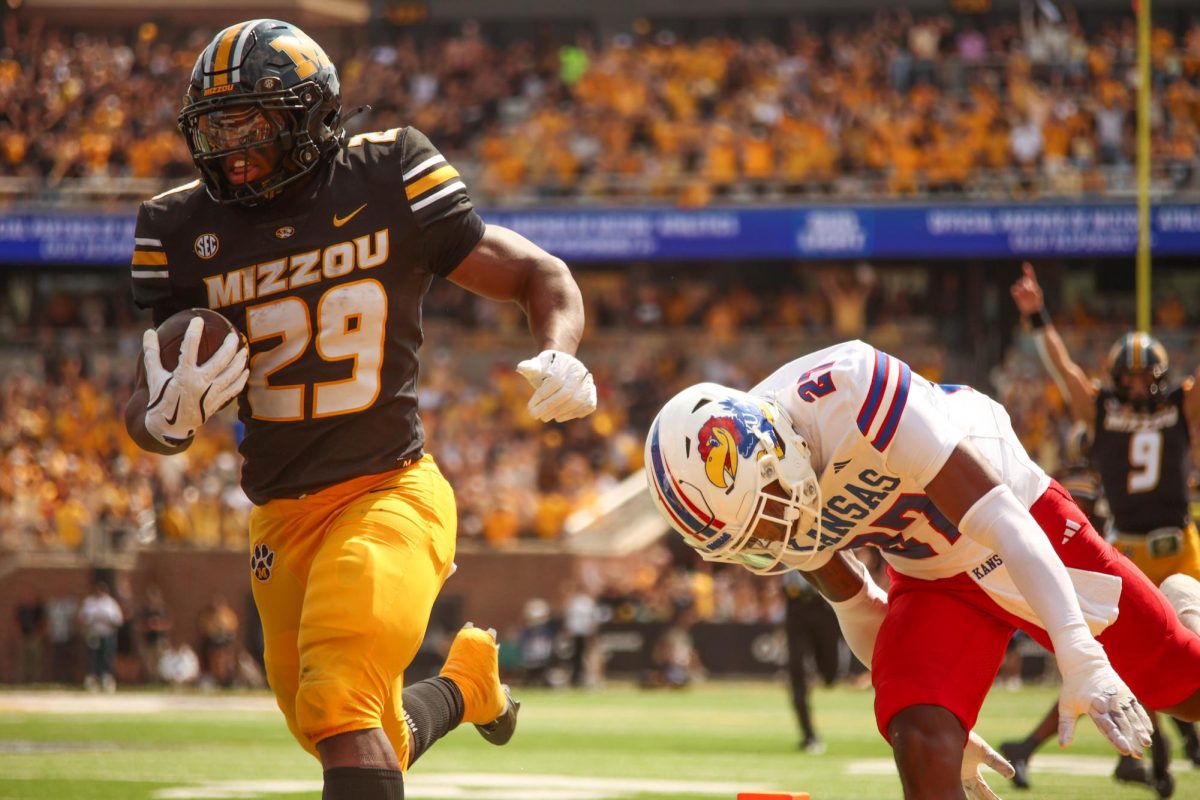In announcing their decision to leave the Big 12 Conference to join the Southeastern Conference, MU not only entered into a new era of athletic tradition and competition, but it will undergo great changes in its athletic spending.
On July 1, 2012, MU will become a fully instated member of the SEC, which means it will receive a full share of the conference’s distributed finances under the revenue-sharing plan.
This plan provides the long-term financial stability and equality among schools that appealed to MU, according to Chancellor Brady Deaton.
Approximately $18.3 million was given to each school in the SEC last year, while MU received $10.3 million in 2009-10 as a member of the Big 12, as stated in an article in The Kansas City Star.
“We are stable, and we have long-term contracts that, I think, really show the long-term financial stability of our athletic programs,” SEC Commissioner Mike Slive said. “We have 5,000 student-athletes in the SEC, men and women, and our long-term goal is to provide financial stability so 5,000 student-athletes can compete and have that experience that we all value so much.”
According to a confidential document obtained by the Associated Press, Missouri could potentially earn $19.25 million next year in a television deal from the SEC, which surpasses what it was expected to receive from the Big 12 by little more than $2 million, according to an article on EPSN.com.
This document also indicated the Big 12 would require MU to pay an exit fee of as much as $26 million.
When Colorado and Nebraska left the conference last year, they were each able to come to an agreement on about half of what they were originally obligated to pay. Deaton said in a press conference Sunday that Missouri intends to take full financial responsibility for this fee with no help from their new conference.
“We understand the bylaws of the conference and the expectations regarding some range of exit fees,” Deaton said. “Let me simply say that the University of Missouri will bear those responsibilities. They are not the Southeastern Conference’s responsibilities.”
As far as recruiting expenses are concerned, the United States Department of Education website states MU spent $861,859 in the 2010-11 school year. This number pales in comparison to the majority of the SEC universities.
Of the 12 current universities, only two, South Carolina and Mississippi State, spent less money than Missouri did on athletic recruiting in 2010-11. Tennessee and Auburn topped the list, spending more than $2 million each.
Last year there was discussion about MU possibly joining the Big Ten Conference, in which the biggest spender on recruiting was Michigan, spending about $1.48 million.
Missouri would have been the third lowest spending school in terms of recruiting in the Big Ten. In the Pac-12 Conference, only four schools spent less on recruiting than MU, according to statistics from the U.S. Department of Education.
“Definitely part of Mizzou fitting into the SEC is spending more money in recruiting and scholarships, but at the same time, so is maintaining our integrity academically and, also, making sure we get the best student athletes to come to Mizzou,” freshman Carson Cornelius said. “But that, of course, involves spending a little more money that we will have hopefully by joining the SEC, and that’s part of the purpose of going in the first place.”
MU will likely need to increase its scholarship funds in order to attract more athletes and keep up with its competitors in the SEC, athletics director Mike Alden indicated.
“We have heard back from our leadership team at Mizzou,” Alden said. “We have heard back from our donor base, from our fans, from our alums, from our Tiger Scholarship members and from our student-athletes, and I am very confident knowing that we have a commitment going forward to continuing that movement towards improvement in all areas of our athletic program.”
The U.S. Department of Education numbers show that last year MU spent about $7.5 million in athletic-related student aid, and the average amount spent last year among the 12 SEC schools was about $7.9 million.
Vanderbilt spent nearly $12 million and Ole Miss brought up the rear, only spending around $5.7 million.
As for the amount of revenue generated by men’s and women’s basketball teams, MU would rank sixth out of the current SEC schools.
In football, on the other hand, MU generated more revenue than 10 of the 12 schools, all but Mississippi State and Vanderbilt, in 2010-11.
Ole Miss, Mississippi State and Vanderbilt in the SEC all made less revenue from all sports combined than MU did in 2010-11, according to the U.S. Department of Education.
At the Nov. 6 press conference, Alden acknowledged MU would need to continue improving their facilities, increase recruiting budgets and improve and maintain a quality coaching staff.
“I would tell you that stepping into the SEC, it’s important that we recognize how important that is and that we may need to continue to turn that up even another notch,” Alden said. “This is a great conference in our country and it is important that we continue that commitment.”







